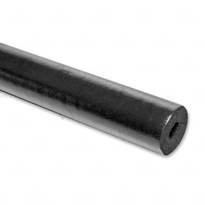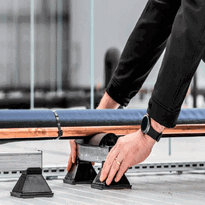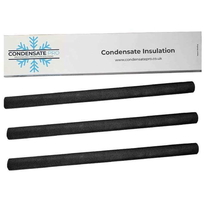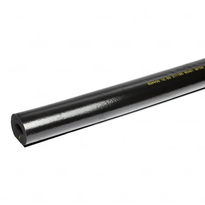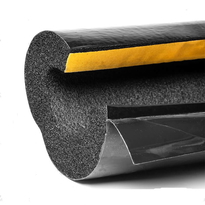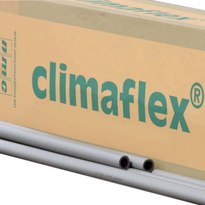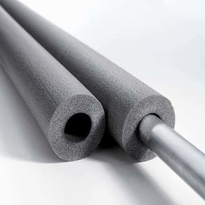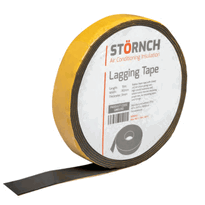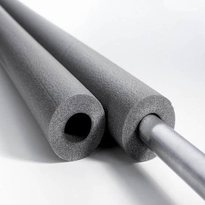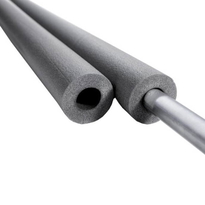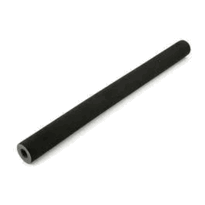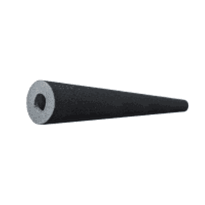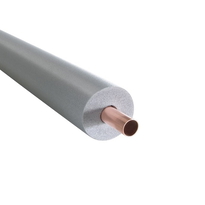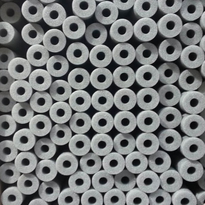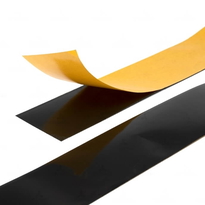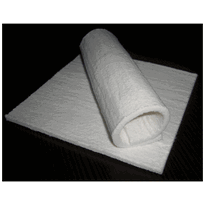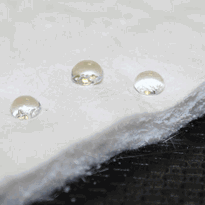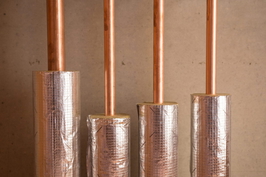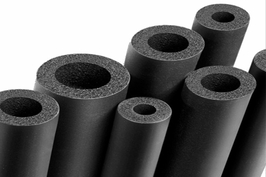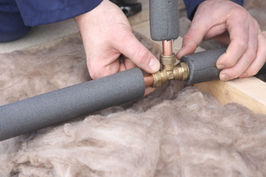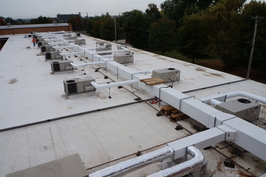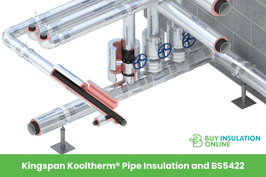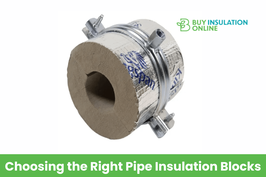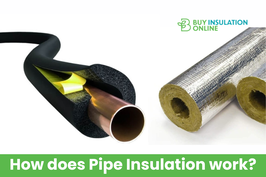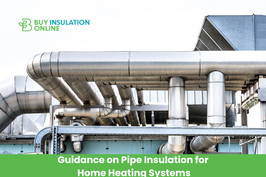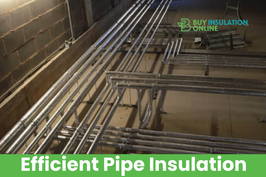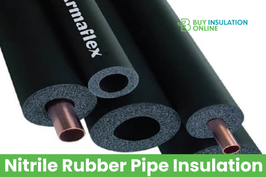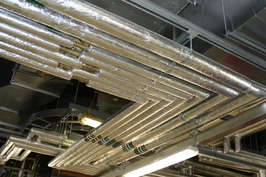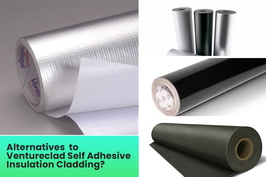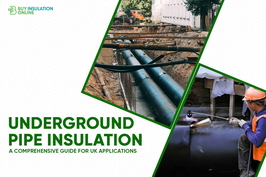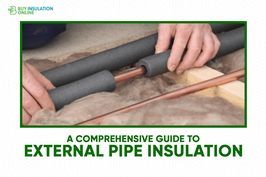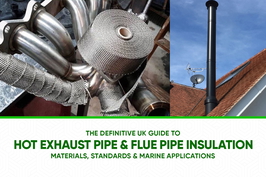15MM External Pipe Insulation
15mm external pipe insulation typically employs materials such as high-density foam, mineral wool, or rubber-based products, chosen based on environmental conditions and safety standards. These insulations are manufactured with specific specifications, including a thermal conductivity of approximately 0.025 W/mK and operational temperature ranges from -50°C to +110°C, ensuring effective heat retention and fire resistance.
Proper installation involves cleaning the pipe surface, securing joints adequately, and extending the insulation around pipe supports. This process helps maximise energy efficiency and safety. Emphasising careful application and adherence to compliance standards ensures the insulation performs effectively throughout its lifespan.
Common Materials and Suitable Applications for 15mm Pipe Insulation
Selecting the appropriate materials for 15mm pipe insulation requires careful consideration of environmental conditions, type of piping, and specific performance needs.
Beta Phenolic foam offers high energy efficiency with low thermal conductivity. This makes it suitable for domestic hot water systems and indoor pipes where maintaining consistent temperatures is important. Its excellent thermal insulation properties help reduce heat loss effectively.
Nitrile Rubber and EPDM foam provide excellent flexibility and water resistance. Their properties make them ideal for outdoor piping, HVAC applications, and refrigeration lines. This is especially true in environments subject to weather exposure and temperature fluctuations.
Mineral Wool (Rockwool) is commonly used in industrial settings where fire resistance and sound insulation are priorities. It's particularly suitable in environments with strict fire safety standards, such as boiler rooms or plant rooms.
Polyethylene foam, being lightweight and water-resistant, is appropriate for external pipe lagging and frost protection. Its durability ensures reliable performance where outdoor pipes are exposed to moisture and cold conditions.
Ultimately, the choice of material depends on balancing thermal performance, safety standards, and environmental challenges. Proper selection ensures efficient insulation, safety compliance, and longevity of piping systems across various UK applications.
Key Specifications and Performance Metrics
When selecting 15mm pipe insulation, it's important to understand key specifications and performance metrics to ensure effective and suitable application.
The physical dimensions generally include a 15mm bore designed to fit standard pipes, with wall thicknesses that can vary depending on the product—commonly reaching up to 15mm. The overall outer diameter typically measures around 45mm when accounting for the insulation layer, providing adequate coverage and protection.
Lengths of 15mm pipe insulation are usually available in pre-cut sections of 1 metre or 2 metres, ideal for straightforward installation. For more flexible applications, continuous rolls are also available, allowing for custom sizing as required.
Thermal performance plays a crucial role in insulation efficiency. Premium varieties usually feature a low thermal conductivity of approximately 0.025 W/mK, which significantly reduces heat loss—potentially by up to 90%. The insulation materials are designed to operate effectively within a service temperature range of -50°C to +110°C, ensuring durability under varying environmental conditions.
Durability factors are vital for long-term performance. Many 15mm pipe insulations are manufactured with high-density materials that resist moisture, UV radiation, and chemicals. This resilience helps maintain insulation integrity and prolongs service life. This resistance also contributes to maintaining the insulation's thermal properties over time.
Safety standards also govern the manufacture of pipe insulations. Products typically meet low flame spread and smoke emission criteria, often classified under standards such as Class 0 or B, contributing to safer installation and operation in line with UK building regulations.
Effective Thickness and Installation Guidelines
Effective insulation thickness is primarily determined by the outside diameter of the pipe, the properties of the insulation material, and the specific performance requirements of the project. When selecting insulation, it's important to bear in mind that the actual outside diameter of a 15mm pipe is larger than its bore size, which influences the necessary insulation thickness. Standard fibreglass insulation ranges from 15mm to 127mm, allowing for customisation of thermal performance based on climate conditions, pipe temperature, and energy efficiency goals. A common guideline suggests that the minimum insulation thickness should be equal to or greater than the pipe’s outside diameter to ensure effective thermal resistance. Proper installation is crucial for optimal performance. This involves cleaning the pipe surfaces thoroughly, providing adequate clearance for both insulation and future maintenance activities, and securely sealing joints with overlaps and vapour barriers. Additionally, it's important to extend the insulation around supports and hangers to prevent thermal bridging, which could compromise the insulation’s effectiveness. The selection of appropriate insulation materials also plays a critical role in ensuring the insulation performs well under specific environmental conditions and helps maximize energy savings.
Enhancing Energy Efficiency With Proper Insulation
Proper pipe insulation significantly contributes to energy efficiency by reducing heat transfer between the piping system and its surrounding environment. Effective insulation minimises heat loss from hot pipes, helping to maintain desired temperatures, which enhances process control and conserves energy. This reduction in energy loss results in lower utility costs and overall energy consumption. Insulation also prevents unnecessary heat gain in cold-water pipes exposed to warm environments, reducing the amount of energy needed to reheat water. For smaller pipes, such as those measuring 15mm in diameter, proper insulation is particularly important because they tend to lose heat more rapidly, impacting overall system efficiency. Additionally, insulation acts as a barrier against moisture, preventing condensation, which can lead to corrosion or mould growth, thereby extending the lifespan of the pipes. Proper insulation also enhances safety by reducing surface temperatures that could otherwise pose a burn or blister risk during maintenance or contact. Using suitable insulating materials also helps in meeting building code requirements related to safety and efficiency standards.
Fire Safety Ratings and Standards for 15mm Pipe Insulation
Fire safety is a critical consideration when selecting pipe insulation for buildings in the UK. The materials used must meet strict standards to ensure they don't contribute to the spread of fire or release dangerous smoke and gases. Understanding the relevant fire safety classifications helps ensure compliance and safety. Assessing the fire safety of 15mm pipe insulation involves various tests and classifications that evaluate flame spread, smoke development, and general combustibility. One of the key standards in this regard is ASTM E84 (also known as UL 723), which measures the surface burning characteristics of materials used in construction. This test provides vital data on how quickly a material may burn and how much smoke it produces under fire conditions. In addition to ASTM E84, other assessments such as the UL 94 test are important for evaluating the self-extinguishing properties and flame retardancy of insulation materials. Compliance with such standards indicates that the material performs reliably when exposed to fire. Mineral fibre insulations, such as Rockwool, are widely recognised for their excellent fire safety characteristics. These materials are non-combustible and typically achieve high ratings for flame spread and smoke production, making them suitable for use in environments with stringent fire safety requirements. Thermotec 4-Zero Thermal Wrap, for example, scores a zero in early fire hazard ratings as per AS/NZS 1530.3, indicating its minimal contribution to fire development. Such low fire hazard ratings are particularly advantageous in sensitive environments, including healthcare facilities, data centres, and cleanrooms. Standards like ASTM E119 (fire resistance tests for building materials) and UL 1709 (rapid fire growth tests) are also relevant for pipe insulation materials intended for use in buildings subject to significant fire safety regulations. These ensure that the insulation can withstand fire exposure for a specified period, providing valuable time for evacuation and firefighting efforts, especially when the materials are combined with fire-resistant barriers for enhanced safety.
Conclusion
Selecting the appropriate 15mm pipe insulation requires a clear understanding of its material characteristics, installation methods, and compliance with safety standards. Proper fitting of the insulation reduces energy wastage, prevents the formation of condensation, and ensures adherence to fire safety regulations. By choosing the right materials and following accurate installation guidelines, engineers and contractors can enhance system efficiency and safety effectively.
This knowledge facilitates the effective application of 15mm pipe insulation across a range of industrial, commercial, and domestic environments. Ultimately, it supports achieving optimal performance and long-term compliance over the insulation’s service life.
